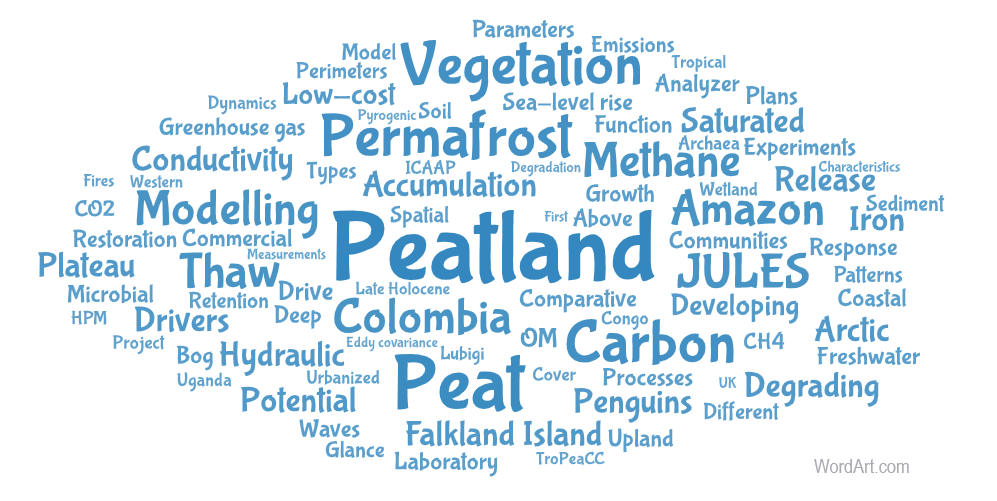TroPeaCC
Tropical Peatlands and the Carbon Cycle
TroPeaCC
Tropical Peatlands and the Carbon Cycle

Posted by Terhi Riutta
22 September 2023June was a very busy month for the TroPeaCC project. We had the pleasure of hosting Charles Jjuuko, Paola Alarcon and Michel Mbasi, our TroPeaCC team members from Uganda, Colombia and DRC, in Exeter (see a separate post here), and while they were here, we organised another symposium on peat and peatlands (a post about the previous symposium here).
Peatlands cover a large geographic range, which was very well represented in the symposium: we had presentations from the arctic, mid-latitudes north and south, and around the equator. Time wise, in addition to the contemporary peatland vegetation and carbon dynamics, the presentations looked into the Holocene past, thanks to the incredible property of peatlands to archive their own history in the peat deposits, and into the future, thanks to the sophisticated dynamic models. We also covered spatial resolutions from organic molecules to the Earth and temporal resolutions from fractions of a second to millennia.
A few snippets:
“Of course, peat is a setting where the entirety of the organic geochemical composition – from input to degradation – is particularly fascinating.” Rich Pancost on Archaea, organic matter decomposition and lipid biomarkers
“Perishing palsas! Heterogeneity, lateral thaw, fragmentation.” Noah Smith on the thawing of permafrost peat
“You may not know PyC, but you may familiar with these names: soot, char, black carbon, biochar, Anthropogenic Amazon Dark Earths, etc…” Yuwan Wang on pyrogenic carbon and fires in Amazonian peatlands
“Peat plus penguins” Sue Page on peatlands in the Falkland Islands
“HPM super power: negative accumulation” Anne Quillet for modelling peat dynamics with the Holocene Peat Model
“Why is there peat? What do you think? Occupy only ~3% global land surface, so must require special conditions, right?” Andy Baird on modelling peatland growth and function
Many thanks to all participants!